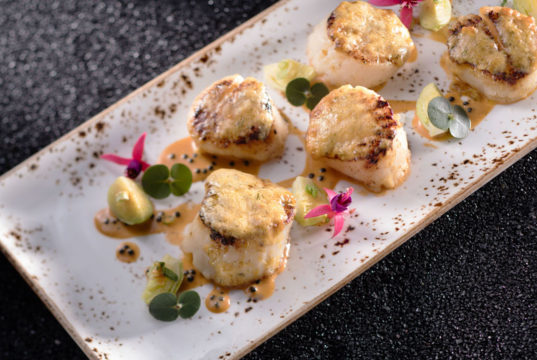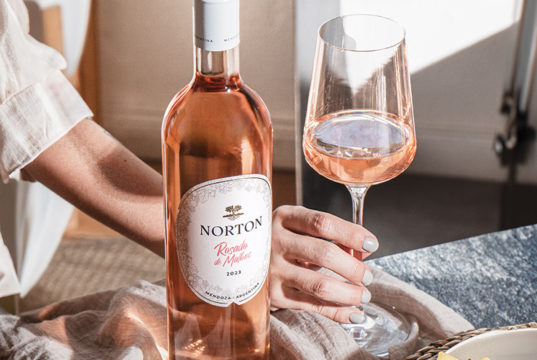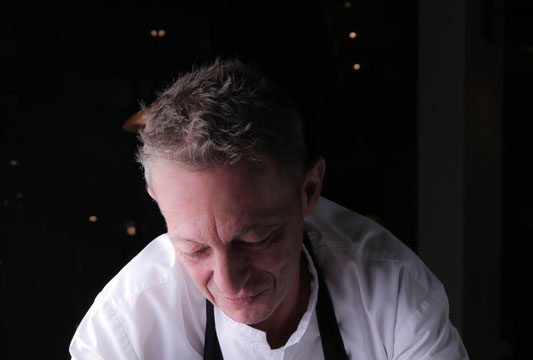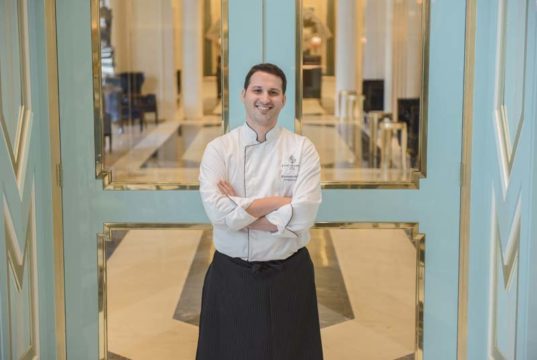JAPANESE IZAKAYA WITH A TWIST
Let the sounds of laughter and the smell of freshly-grilled seafood lead you down Zuma’s Cinderella spiral staircase, where the relaxed vibe of Japan’s izakaya style of dining meets first-class cuisine.

The friendly buzz of the cool-but-casual dining room tells you this is an izakaya, yet the contemporary, gourmet dishes sizzling in the open kitchens suggests this izakaya has met a sophisticated twist. The dining room is grand and spacious and the service matches any other fine dining restaurant. Yet even with this lavish semblance, the essence of a leisurely izakaya is not lost. Dishes are designed for swapping and sharing, and they are brought to the table continuously throughout the meal, rather than a stiff template of individual starters and main courses.
This relaxed style of dining attracts an equally laid-back crowd, with Hong Kong’s finest often ensconced in the leather chairs at the upper floor bar, sipping on pre-dinner tipples. Don’t miss the Raspberry and Passionfruit martini, made from Bison Grass Vodka and shaken with raspberries and passion fruit, finished with a hint of fresh apple juice. This delightfully tangy Martini is a perfect balance of fruity flavours, not to mention the perfect start to your Zuma experience.
Dinner with a Show
In a city where space is a treat in itself, Zuma’s 10,000 square foot restaurant is quite a sight, and it hosts not one, but three dramatic open kitchens: The Main Kitchen, The Sushi Counter and The Robata Counter. Both The Sushi Counter and The Robata Counter invite guests to watch their meals being prepared from freshly selected ingredients, with the expert chefs staging their craft in a dramatic display of culinary flair.
Helmed by Head Sushi Chef Kazutoshi Endo, the Sushi Counter tempts with its variety of market fresh sashimi, nigiri and maki sushi. The dynamite spider roll is a firm favourite, with its soft shell crab, chilli mayonnaise, cucumber and wasabi tobiko sauce. For the sheer spectacle, opt for the sashimi omakase, where the chef whips up premium cuts in an oversized, ice-filled dish, slicing and chopping with powerful precision. Chef Kazutoshi revels in the discipline of sushi, following the philosophy that appearance is of equal importance to taste. Be prepared to face sushi that looks almost too good to eat.
At The Robata Counter, a fine selection of quality meats, poultry, market seafoods and seasonal vegetables are grilled and served with Zuma’s signature sauces. Indulge in Executive Chef Yoshi Muranaka’s gindara saikyo-yaki specialty, where miso marinated black cod is expertly wrapped in hoba leaf, leaving the fish with an impossibly succulent texture. Chef Yoshi continually innovates and develop his own style of cooking, experimenting especially with fresh citrus juice and the flavours of katsuobushi and konbu. Try his yaki taraba gani; barbecued Alaskan king crab with a ponzu lime butter.
Although Japanese cuisine is known more for its savoury dishes rather than its sweet, Zuma’s desserts are some of the most delicious and whimsical in the city. Created by Head Pastry Chef Eddy Lee with nothing more than simple ingredients and a lot of imagination, the flavours are bright and the presentation is impeccable. The caramelized Kyoto kintoki carrot cake is a seamless match of rich notes and fresh flavours. Served with roasted pineapple and Bubu Arare ice cream, the Bubu Arare delights with crispy, puffed rice pellets that add a pleasantly crunchy texture – a true Japanese favourite. The secret to Lee’s delicious desserts is in the way the flavours are combined. Innovative and imaginative, Lee spends hours experimenting to come up with new and exciting combinations of predominately natural flavours. Lee’s favourite is his sake-poached Japanese peach, balanced with a roasted brown rice cracker and topped with yoghurt cream and a mandarin sorbet.
Authentic and Fresh
Zuma’s contemporary dishes are described as “authentic but not traditional”. Japanese fish is sourced from Japanese waters, and Japanese vegetables are grown on Japanese soil. But the chefs have broken the moulds of traditional Japanese cuisine by experimenting with these authentic flavours and creating avant-garde interpretations.
Chef Yoshi Muranaka astutely marries the flavours of his homeland with local tastes and expectations, with ideas as fresh as the produce Zuma is proud to serve. The innovative recipes evoke the sensuality and tradition of Japan, and each dish harnesses the essence of Japan’s seasons. Renowned for its premium seafood quality, Zuma’s fish is flown in on a daily basis from Japan’s largest and busiest fish and seafood market in Tsukiji, Tokyo.
Located on the fifth and sixth floor of the Landmark shopping complex, Zuma Hong Kong is the sister restaurant to the flagship, Zuma London. With its charming atmosphere and fresh, contemporary cuisine served up in an interactive and palatial setting, Zuma Hong Kong is the ultimate destination to kick back and enjoy your favourite Japanese delicacies.
(www.zumarestaurant.com)
CHEF TIPS
FOR SUSHI & SASHIMIFrom Zuma’s Head Sushi Chef, Kazutoshi Endo
USE THE RIGHT PRODUCE
Stay true to Japanese delicacies, and use only quality, authentic ingredients. The seafood at Zuma is ordered fresh every morning from Tsukiji in Tokyo, where some of the best of Japan’s daily catch is available at the legendary fish market.FRESH IS BEST
When it comes to sushi and sashimi, never compromise on freshness. At Zuma, we have a strict rule that the fish must be served within 24 hours of delivery. The only exception is when you are ageing the fish, much like the process of ageing beef. Akami tuna is the best for this. The fats of the fish get more concentrated, the umami levels rise and the piece of akami tuna becomes buttery and flavourful, creating the perfect marriage of oils and umami.BE INNOVATIVE AND CREATIVE
Never stop creating and experimenting in order to continually make food exciting and new. Traditional sushi and sashimi is outstanding, but so are many of today’s modern interpretations and twists. With tuna for example, I like to char the top part to impart a layer of smokiness, as well as to bring out the tuna’s mineral flavours. I shun the blowtorch – which will inadvertently leave a chemical aftertaste that impairs the umami of the fish – to instead use glowing, organic charcoal on tongs.PAY ATTENTION TO EVERY DETAIL
From the ingredients and flavours, to the correct slicing techniques for sashimi, you have to be meticulous. At Zuma we pay attention to every detail, right down to the wasabi and soy sauce. Fresh wasabi is grated with a sharkskin wasabi grater, and premium brand soy sauce is sourced from Yamasa, one that is eminently preferred by almost all professional Japanese chefs. Aromatics and presentation is very important in Japanese cuisine.KNOWLEDGE AND UNDERSTANDING
In order to make Japanese food authentically, you must have good knowledge of the products and ingredients. Understand the history and culture of sushi and sashimi, and this will help you to understand how to handle the fish in terms of preparation, ingredients, presentation and most importantly, hygiene.CONSISTENCY AND PASSION
Zuma has been launched with a deep love of food, of Japan, of creativity and passion – it reflects in the food!



























































